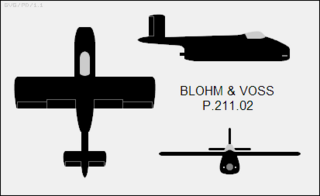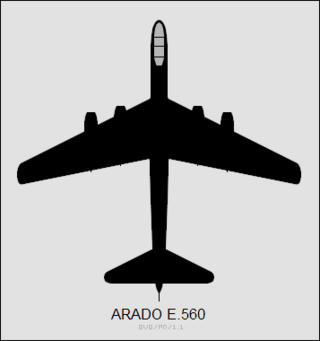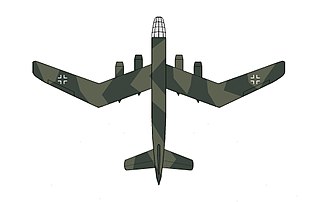Related Research Articles

The Blohm & Voss P 194 was a German design for a mixed-power Stuka or ground-attack aircraft and tactical bomber, during World War II.
The Alekseyev I-21 was a Soviet twin-engined jet fighter, built in the late 1940s. Two prototypes were constructed with the designation of I-211, of which one was converted into the I-215 with more powerful engines. A third aircraft was built to evaluate the bicycle landing gear arrangement for use in other aircraft. The fighter was not accepted for production as it was inferior to the swept-wing fighters like the Mikoyan-Gurevich MiG-15.

The Blohm & Voss P 211 was a design proposal submitted by Blohm & Voss to the Volksjäger jet fighter competition of the Luftwaffe Emergency Fighter Program towards the end of the Second World War.

The Blohm & Voss P.208 was a design project for a tailless swept-wing propeller-powered interceptor designed by the German company Blohm & Voss towards the end of the Second World War.

The Arado E.560 was a series of multi-engined Arado medium-range tactical bombers projected during the Second World War.

The Blohm & Voss P 170 was a three-engined unarmed fast bomber and ground-attack aircraft project proposed by the aircraft manufacturer Blohm & Voss to the Luftwaffe during the Second World War.

The Blohm & Voss Bv P 188 was a long-range, heavy jet bomber design project by the Blohm & Voss aircraft manufacturing division during the last years of the Third Reich. It featured a novel W-wing planform with variable incidence.
The Blohm & Voss P 214 was a small manned interceptor project described as a Bemannte Fla. Bombe, meaning "Manned Air Defence Bomb". It was studied late in 1944 but not developed past the project stage.
The Blohm & Voss P215 was an advanced jet night fighter project by Blohm & Voss during the Second World War. With a crew of three and twin jet engines, it featured a tailless swept-wing layout and heavy armament. An order for three prototypes was received just weeks before the war ended.
The Blohm & Voss P 163 was a design project for an unconventional bomber during World War II. Constructed mainly from steel, its crew were accommodated in large wingtip nacelles, giving it a triple-fuselage appearance. Its propeller drive system was also unusual, with the central fuselage containing twin engines coupled to a front-mounted contra-prop.
The Blohm & Voss P 203 was a design project for a heavy fighter during World War II. Capable of filling the roles of night fighter, light bomber and ground-attack, it had mixed propulsion, having both piston engine driven propellers and jet engines.
The Blohm & Voss P 200 was a design project for a transatlantic transport flying boat during World War II. It was intended to go into production for Deutsche Lufthansa after the war.
The Blohm & Voss P 209 was one of a series of single-engined jet fighter design studies. Under development in the latter half of 1944, when the single-engined jet fighter requirement was issued the P 209 was radically revised to meet the deadline but was not taken further by the RLM.
The Blohm & Voss P 197 was a design project during World War II for a single-seat twinjet fighter, in response to a requirement issued in 1944.
The Blohm & Voss P 198 was a design project during World War II for a single-seat high-altitude jet fighter.
The Blohm & Voss P.202 was an unusual design study for a variable-geometry jet fighter during World War II. It was the first design to incorporate a slewed wing in which one side swept forward and the other back. The P.202 was never built or flown.
The Blohm & Voss P 204 was one of several design studies by Blohm & Voss for asymmetric dive bombers during World War II. It was also unusual in having hybrid propulsion comprising both piston and jet engines.
The Blohm & Voss P 192 was a design study for a dive bomber/ground attack aircraft intended to replace the Junkers Ju 87.

The Blohm & Voss P 184 was a German design for a long-range reconnaissance aircraft during World War II. Carrying a crew of five, it was of aerodynamically clean appearance and its wing had an unusually high aspect ratio.
The Messerschmitt P.1107 was a jet-powered bomber project developed in the final years of the Second World War.
References
Notes
Bibliography
- Hugh Cowin; "Blohm und Voss Projects of World War II", Air Pictorial, October 1963, pp. 312–316.
- David Masters; German Jet Genesis, Jane's, 1982, p. 28.